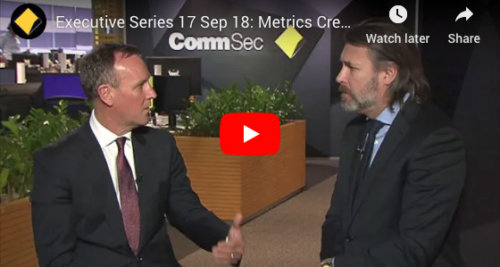Portfolios need more downside protection

As global equity markets turn down on increasing concerns about the economic impact of the coronavirus, both investors and their advisers have been recommended to review their portfolios’ downside protection.
Andrew Lockhart, Metrics Managing Partner, said the prolonged bull run in equities and the low interest rate environment had driven many investors into overweight positions in growth assets.
“In the current environment, it is important for advisers and investors to stress test portfolios and ensure adequate downside protection,” he said.
Mr Lockhart noted that investments that are senior in a company’s capital structure and rank ahead of equity, result in less volatility and lower correlation than investments in equity markets.
“When markets begin to rise again, these assets rise from a higher point and obtain greater cumulative benefits from compounding returns,” he said. “Effectively, losing less requires less to bounce back.”
Downside protection is a key feature of Australia’s corporate loan market, which offers capital stability and consistent returns throughout market cycles.
“Regardless of conditions in equity markets, Australian corporates still have to borrow and refinance their loans, and continue to pay interest on current loans,” Mr Lockhart said.
“As such, an investment in defensive asset classes such as corporate loans has historically provided an important source of downside protection in previous downturns.”
Preserving capital does not mean losing income
While preserving capital is key for pre-retirees and retirees, corporate loans can also provide an important source of income, from the interest corporate borrowers pay.
As they are slightly higher up the risk curve than government bonds, corporate loans offer attractive income returns.
“Currently, Australian government bonds are generating around 2%, which is similar to the rate of inflation,” Mr Lockhart said.
“Rather than investing in these assets for effectively no return, by taking on slightly more risk investors can obtain reliable returns of between 4-10% from the direct lending to Australian companies.
“And for those investors who require liquidity, an investment in an ASX-listed fund providing exposure to a diversified corporate loan portfolio can provide daily entry and exit – with income paid monthly.”
Strong local corporate loan assets
Corporate loans are loans made to businesses of scale (ie not SMEs) for a specific purpose, such as working capital, real estate, capital expenditure and acquisitions and returns are generated from the interest they pay.
This subset of fixed income is classified as a defensive investment as it is structured with embedded protections such as floating rates, providing predictable yields and low volatility.
While corporate loss rates are low, averaging 0.32% over the past 10 years, Mr Lockhart said it is important for investors to tap into well-diversified portfolios that effectively spread risk.
“Corporate loan fixed income portfolios with around 150 such loans provide diversification across sectors and loan tenors, and can therefore be a valuable addition to an investor’s fixed income allocation,” he said.
A corporate loan fund can provide exposure across a range of industry segments including energy, industrials, consumer staples, healthcare, IT, utilities, infrastructure and commercial real estate.
“With the recent fall in equities markets and growing uncertainty in global markets, we believe corporate loans warrant a closer look for investors seeking downside protection,” Mr Lockhart concluded.
Advisor Choice – 5 March 2020
Other News
Research Paper: Six Trends for Private Credit in 2026
Metrics Credit Partners has released its latest research paper, Six Trends for Private Credit in 2026, exploring the opportunities and challenges…
Metrics Innovate Reconciliation Action Plan
We are proud to share our second Reconciliation Action Plan (RAP), reaffirming our commitment to truth, healing and unity. We…
INSIGHTS
MCP Income Opportunities Trust (MOT) lists on ASX
Sydney, 29 April 2019: The Trust Company (RE Services) Limited (ABN 45 003 278 831) (Responsible Entity) is the responsible…
MCP Master Income Trust wins Lonsec Listed Fund Award
The award came a year after MXT was listed on the Australian Securities Exchange






